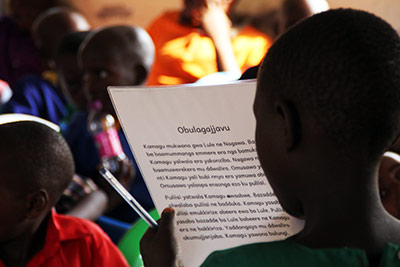Congratulations Bloom!
/We are very pleased to announce that Bloom has been named the grand prize winner of the All Children Reading: A Grand Challenge for Development (ACR GCD) Enabling Writers Prize Competition funded by USAID, World Vision, and Australian Aid. The goal of the competition was to incentivize the development of software which makes it easy to create and export decodable and leveled fiction and nonfiction readers in mother tongue languages. After field testing in Bangladesh, Cambodia, Ethiopia, and Jordan, SIL International’s Bloom software was found to best meet the goals of the competition with the highest usability and functionality scores.
Simplicity has always been a key feature in Bloom’s development. Children in early grades, just learning to read, do not need complicated books. They need simple books with content that is relevant to their own culture and language. The process for creating these books should be as simple as possible too. The hope is that Bloom will empower and enable anyone to write many books, especially people from minority language communities. The lack of texts and storybooks often hinders literacy in minority language communities. With its ease-of-use, anyone with very basic computer skills can create an endless number of books. Users anywhere can also draw on the growing library of template books to adapt them to their local language and context.
With new feedback from the competition’s testing, the team looks forward to further improving the functions of Bloom. One improvement is that there will now be two ways to determine a “decodable” book. Bloom was first developed, with the help of SynPhony, to help define what letters and sight words are appropriate for a particular grade level. As a book is written, the software highlights words and letters that are beyond the intended grade level for that book.
One of the competition test sites showed that users wanted to be able to first input the “allowable” words for each grade level and then build stories using only words from that list. This method is unusual and was not anticipated by the Bloom developers. But in response to the testing results this option was added. Users will now be prompted to choose one of the two methods, and then Bloom will walk them through their chosen approach.
Congratulations to John Hatton and his the Bloom team; Norbert Rennert who added much value to Bloom with his SynPhony literacy tool; and everyone at SIL International and beyond who made Bloom the success it is and will continue to be. We at SIL LEAD are thankful to have been a part of the effort and look forward to many more children having books to read in their mother tongue thanks to the generous grand prize awarded to Bloom by All Children Reading: A Grand Challenge for Development.
Related Links:















